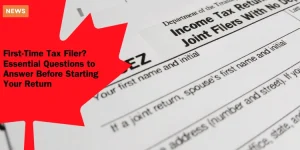2025 Vehicle Deduction Limits: What Business Owners Need to Know About New Government Rates
Anúncios
Overview of 2025 Vehicle Deduction Changes
The landscape of vehicle deductions is evolving in 2025, reflecting a push towards updated government rates and regulations designed to better meet the needs of contemporary businesses.
This year, the Internal Revenue Service (IRS) has introduced significant changes to the automobile deduction limits, impacting how businesses manage and document their vehicle-related expenses.
Anúncios
Introduction to the Updated Automobile Deduction Limits for 2025
For 2025, the IRS has updated the deduction limits for both standard mileage rates and vehicle depreciation.
These updates are largely driven by fluctuating economic factors, including variable fuel costs and broader efforts to streamline tax guidelines for businesses.
Anúncios
The revised limits aim to provide a clearer framework for businesses, ensuring they can effectively manage and utilize their vehicle expenses for operational efficiency.
Key Changes from Previous Years’ Rates
A notable shift in 2025 is the increase in standard mileage rates for the business use of vehicles.
This means businesses can deduct a higher per-mile rate compared to previous years, reflecting current trends in operational costs associated with vehicle maintenance and fuel.
Additionally, vehicle depreciation limits have been adjusted to accommodate the varying resale values of vehicles and specific provisions for luxury automobiles have been refined.
Furthermore, the methods for calculating personal use of company vehicles for employees have seen adjustments.
These changes are designed to provide more precise valuations, ensuring that both employers and employees can benefit from equitable deductions and reporting standards.
Who These Changes Affect in the Business Community
The updates to vehicle deduction limits in 2025 have broad implications across the business community.
Small business owners, fleet operators, and any organization that utilizes vehicles for business purposes will need to stay informed and adapt to these new regulations.
These changes will particularly impact companies with significant employee travel and those that use a substantial number of vehicles for daily operations.
Employers will need to revisit their company vehicle policies and adjust their record-keeping practices to stay compliant.
This includes accurately distinguishing between personal and business use of vehicles to maximize their potential deductions and avoid penalties.
Overall, the 2025 modifications prioritize clarity and relevance, empowering businesses to better navigate their vehicle expenses within the evolving economic landscape.
Transitioning into the next topic, it’s important to delve deeper into how these changes in standard mileage rates will shape business operations and expense claims in the year ahead.
 Find out if any changes affect you
Find out if any changes affect you
Standard Mileage Rates
New standard mileage rates for business use of vehicles
As taxpayers gear up for the upcoming tax season, it’s important for business owners to stay informed about the updated standard mileage rates for 2025.
The IRS has announced that the standard mileage rate for the business use of vehicles will be increased to 58 cents per mile, up from the previous rate of 56 cents per mile in 2024.
This change aims to better reflect the current costs associated with operating a vehicle for business purposes, giving businesses a fair opportunity to deduct expenses.
How these rates compare to 2024 figures
Comparing the standard mileage rates for 2025 with those of 2024 reveals a modest, yet significant change.
The increase from 56 cents to 58 cents per mile may seem small, but for businesses with extensive vehicle usage, these additional 2 cents can lead to substantial savings over time.
This adjustment accounts for the rising costs of fuel, maintenance, and other vehicle-related expenses, ensuring that the rates remain aligned with real-world conditions.
Guidelines for claiming standard mileage deductions
Claiming the standard mileage deduction is a straightforward process when you follow the IRS guidelines.
Here are the steps to ensure you maximize your deductions:
- 🚗 Document Your Business Mileage: Keep a detailed log of all the miles driven for business purposes. The log should include the date, starting and ending points, the purpose of the trip, and the total miles driven.
- 🚗 Maintain Records: Save all supporting documents, such as fuel receipts and maintenance records. Although these aren’t required to claim the standard mileage rate, having them on hand can substantiate your business usage if questioned by the IRS.
- 🚗 Choose the Right Method: You have the option to choose between the standard mileage rate and the actual expense method each year. The standard mileage rate is simpler, but if your actual vehicle expenses are significantly higher, calculating the actual expenses might be more beneficial.
- 🚗 Consistent Application: Once you choose the standard mileage rate method for a vehicle owned or leased during the first year of business use, you must use this method for the entire lease period if you leased the vehicle.
Staying compliant with these guidelines ensures that your standard mileage deductions are valid and accurate, helping you take full advantage of the updated rates for 2025.
Vehicle Depreciation Limits
With the 2025 vehicle deduction limits update, the IRS has introduced new maximum depreciation allowances for business vehicles, impacting many businesses and tax strategists.
It’s essential to understand these changes to maximize your deductions and ensure compliance.
Maximum Depreciation Allowances for Business Vehicles
For 2025, the IRS has adjusted the maximum depreciation limits for business vehicles to reflect current market conditions.
The first-year depreciation limit for business vehicles has been increased, allowing for greater initial write-offs.
For typical passenger vehicles, the maximum allowable depreciation deduction for the first year is $11,200, up from $10,300 in 2024.
This increase aims to help businesses recover their investment in vehicles more quickly and is particularly beneficial for companies with high vehicle turnover.
Special Provisions for Luxury Automobiles
Luxury automobiles, defined as passenger vehicles with a gross vehicle weight rating (GVWR) of 6,000 pounds or less and a purchase price exceeding a specific threshold, have unique depreciation limits.
For 2025, these limits have been set to ensure that businesses cannot excessively deduct the cost of high-value vehicles.
The first-year depreciation limit for luxury automobiles remains at a reduced level of $28,000, ensuring a more balanced approach to vehicle expense deductions.
This provision encourages businesses to consider cost-effective vehicle options or explore different financing strategies.
Timelines and Requirements for Claiming Depreciation
Claiming vehicle depreciation requires adherence to specific timelines and documentation requirements.
Businesses must ensure they use the vehicle for business purposes more than 50% of the time to qualify for the maximum depreciation allowances.
The IRS mandates meticulous records of vehicle use, including mileage logs, trip purposes, and maintenance records.
Depreciation is calculated using the Modified Accelerated Cost Recovery System (MACRS), and businesses should be aware of the applicable class life for their vehicles.
Passenger vehicles typically fall under the five-year class life, meaning that the vehicle’s cost is spread over five years for tax purposes.
It’s also crucial to remember that using the vehicle for personal purposes impacts the allowable depreciation.
Businesses must prorate the depreciation based on the percentage of business use versus personal use.
Keeping accurate, detailed records throughout the year ensures smooth tax filings and prevents complications during audits.
As we move on from vehicle depreciation limits, the next focus is on understanding how these changes translate into updated expense benefit rates for employees.
Stay tuned for detailed insights to optimize your business operations and tax strategies.
Expense Benefit Rates
As 2025 unfolds, businesses need to acquaint themselves with the revised expense benefit rates concerning employee vehicle benefits and the modifications in personal use valuation methods.
Let’s delve into the key updates and their impacts.
Updated Rates for Calculating Employee Vehicle Benefits
The IRS has revised the rates used to calculate the monetary value of employee vehicle benefits for 2025.
These adjustments are crucial for employers who provide vehicles to their employees for both business and personal use.
It’s essential to apply these updated rates correctly to ensure tax compliance and accurate reporting.
For instance, the new rates will affect how employers calculate the taxable benefit of company-provided vehicles, potentially shifting the amounts reported on employees’ W-2 forms.
Changes in Personal Use Valuation Methods
The personal use of company vehicles is subject to taxation, and methods for valuing this personal use have seen changes for 2025.
Notably, the “Lease Value Rule,” which employers use to determine the value of an employee’s personal vehicle use, has been updated to reflect current market trends and automobile values.
These adjustments are designed to better capture the actual benefit employees receive and enhance fairness in tax assessment.
Employers must familiarize themselves with these changes to apply the correct valuation methods accurately.
Impact on Employer Reporting Requirements
The updates to expense benefit rates and personal use valuation methods also influence employer reporting obligations.
Employers must ensure that they correctly document and report the personal use of company vehicles on employees’ W-2 forms as part of their overall compensation.
Accurate records of the business versus personal use of vehicles are more critical than ever, not only to comply with IRS guidelines but also to avoid potential audits and penalties.
Businesses should review their internal policies and systems for tracking vehicle use to adapt to these new requirements efficiently.
Implementing robust documentation practices and updating employee guidelines on vehicle use are proactive steps that can help in maintaining compliance and minimizing administrative burdens.
These strategic adjustments will ensure that businesses not only comply with the 2025 regulations but also streamline their operational procedures, reinforcing their commitment to regulatory adherence and organizational efficiency.
Compliance and Documentation
Accurate compliance and vigilant documentation are essential for businesses to navigate the updated 2025 vehicle deduction changes successfully.
Let’s break down what you need to know about keeping your records in order.
Required Record-Keeping for Vehicle Expenses
Maintaining comprehensive records is crucial in claiming vehicle expenses.
The IRS will expect you to document the following:
- 🚗 Date of the trip: Note the starting and ending points of your journey.
- 🚗 Mileage: Record the amount of mileage for each trip.
- 🚗 Purpose of the trip: Clearly state the business reason behind the journey.
- 🚗 Costs: Keep receipts and records of all expenses, including fuel, maintenance, parking, and tolls.
Best Practices for Tracking Business Versus Personal Use
To differentiate between business and personal vehicle use, maintaining a meticulous logbook is recommended.
Here’s how:
- Use a dedicated logbook: Have a specific book where every vehicle trip is recorded.
- Mobile apps: Consider leveraging mobile apps designed for mileage tracking. These apps can simplify and automate the log-keeping process.
- Separate vehicles: If feasible, designate one vehicle exclusively for business use to avoid confusion.
- Daily updates: Update your logbook daily to ensure all details are captured accurately and on time.
- Maintain consistency: Stay consistent in how you record information to prevent discrepancies.
Documentation Needed for Tax Filing
When it’s tax time, presenting thorough documentation is essential:
- 🚗 Mileage logs: Present well-kept logs outlining your business mileage.
- 🚗 Receipts: Provide receipts for all vehicle-related expenses throughout the year.
- 🚗 Vehicle information: Keep records of the acquisition date, cost, and detailed usage of the vehicle.
Following these guidelines will help ensure that your vehicle-related expenses stand up to IRS scrutiny.
By prioritizing consistent record-keeping, leveraging technology, and keeping clear distinctions between business and personal use, you can streamline your compliance process and avoid potential audits or penalties.
Keeping detailed logs, maintaining organized records, and consistently updating your tracking methods can make all the difference.
With proper documentation in place, you’re well-prepared for the upcoming changes and can focus on your business’s continued success.
Implementation Strategies
Navigating the 2025 vehicle deduction updates efficiently requires businesses to adopt several strategic steps.
These steps will ensure compliance with new regulations, maximize deductions, and maintain accurate records.
Steps Businesses Should Take to Adapt to New Rates
Adapting to the updated rates involves several critical actions.
First, businesses need to update their accounting and expense tracking systems to reflect the new standard mileage and depreciation rates.
Ensuring that software or manual logs are up-to-date will help maintain accurate records and simplify tax filings.
Next, educating employees about the changes is crucial.
Conducting training sessions or informational meetings to explain the new rates and how to track vehicle usage can prevent misreporting and discrepancies.
Providing materials like updated mileage logs or mobile apps designed for tracking can further assist employees in adhering to the new guidelines.
Moreover, evaluating the current fleet can help businesses decide if changes or upgrades are needed.
Reviewing which vehicles are near their depreciation limit or no longer meet business needs can optimize the operational efficiency and financial benefits.
Recommended Updates to Company Vehicle Policies
Adjusting company vehicle policies is essential to align with the 2025 updates. Policies should be revised to detail the new mileage and depreciation rates clearly.
Including sections that outline guidelines for record-keeping and the distinction between personal and business use is also beneficial.
In addition, establishing stricter controls over personal use of company vehicles can minimize the risk of non-compliance.
For instance, implementing regular checks or requiring detailed logs can help track and separate personal and business miles accurately.
Timeline for Implementing Changes
The timeline for implementing these changes should start immediately.
Here is a suggested schedule:
- Initial Assessment (0-1 month): Conduct a thorough review of current policies and record-keeping practices.
- System Updates (1-3 months): Update accounting systems and logs to reflect the new rates and train employees on the new procedures.
- Policy Revision (3-6 months): Revise company policies and communicate changes to all relevant parties.
- Ongoing Monitoring (6-12 months): Regularly check compliance and accuracy in record-keeping. Address any issues promptly to ensure adherence to the updated guidelines.
Implementing these strategies will help businesses smoothly transition to the new vehicle deduction rates and maintain compliance with IRS requirements.
This transition approach ensures businesses are prepared and compliant, setting them up for smoother operations and accurate reporting.
Read more about vehicles: Navigating the Revived Auto Market: Deals and Strategies for Today’s Car Shoppers







